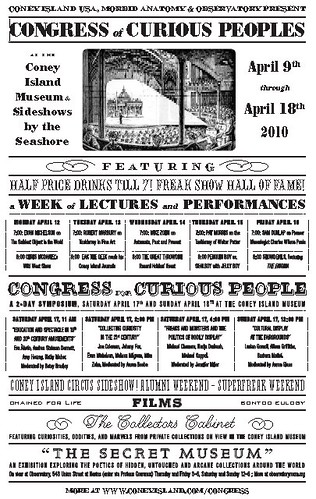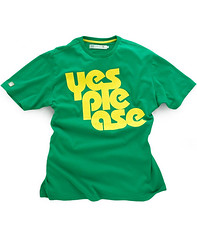In an article titled ‘Einstein, interaktiv und zum Anfassen. Oder: die drohende Auflösung des Museums?’ in NTM: Zeitschrift für Geschichte der Naturwissenschaften, Technik und Medizin (vol. 17, 85–92, 2009), Christian Sichau has argued for a severely restrictive attitude to new acquisitions.
He develops his argument for a next-to-zero collecting policy in opposition to a short appeal made by the historian Klaus Hentschel in Physik Journal in March 2008 (‘Bitte nicht wegwerfen! Allzu oft werden Quellen der Physikgeschichte achtlos entsorgt, statt sie zu sichern’). Here Hentschel gave a chilling example of the accidental destruction of some of the important sources for the history of early German solid state physics. Hentschel called on physicists to be more aware of their heritage, and asked them to contact archives and museums before throwing out older material of any kind.
Sichau takes Hentschel’s appeal as his point of departure for articulating a deliberately pessimistic position. Because there is very limited space available in museums, the daily routine for curators is to reject, rather than accept, new objects. Furthermore, contemporary objects are not spectacular enough for exhibitions; they neither give us clues to the historical past nor relate to what goes on at the frontiers of science, technology, and medicine today. Finally, the need for public outreach more often than not trumps the need to preserve the heritage, and today’s exhibitions tend to rely rather on dramatic multimedia than objects anyway. So even if there may be good scholarly reasons for collecting objects, ‘‘werde ich als Kurator ‘Nein’ sagen müssen’’, concludes Sichau.
If I had agreed with Sichau’s arguments, I would never have devoted so much energy to trying to represent the material culture of contemporary science, technology, and medicine. I have chosen to focus Medical Museion’s efforts — our research, our acquisitioning activities, and our public outreach — precisely on late twentieth century and contemporary medical science and medical technology, and I have come to rather different conclusions than Sichau.
All museum people are familiar with the problems that Sichau is confronting, and I can easily understand why he expresses such defeatist views. I too believe that the acquisitioning and keeping of contemporary science instruments and artefacts is a very demanding task for museums, especially university museums. The current cultural and political climate places university museums uncomfortably between, on the one hand, a museum logic that favors the creation of spectacular public shows and events and, on the other hand, the prevailing logic of university departments, which is to publish as many often-cited scholarly papers in high-ranked journals as possible.
Today’s university museum is placed somewhere between these two entrenched logics. This borderline position is problematic, because curating scientific instruments, technological devices, and medical artefacts does not necessarily lead either to popular blockbuster shows or to a steady flow of articles in high-impact journals. Acquiring and curating material artefact, image, and document collections all too easily becomes a neither-nor; an unspectacular and invisible activity resulting in insignificant publications in low-ranked journals.
In contrast to Sichau, I am not pessimistic, because I believe these problems occasion a number of interesting challenges: intellectual, logistic, and political (see Söderqvist and Bencard 2008; Söderqvist, Bencard and Mordhorst 2009). I see opportunities rather than obstacles. I therefore believe that we should, as a rule, say ‘‘Yes, please’’ when we get a chance to collect visual, material, and textual objects from contemporary laboratories and storage rooms. I suggest that we should even, in Hentschel’s spirit, actively promote the acquisition of such objects. In other words, not only should we not be restrictive, we should indeed open up the sluice gates. An optimistic ‘‘Yes, please’’ policy is nicer and wiser than a pessimistic ‘‘Nein’’ policy.
In the next couple of posts I will explain why this position is not as naïve as it sounds. See next post here.
—
Söderqvist, T. and Bencard, A., 2008. Making Sense or Sensing the Made? Research into Presence Production in Museums of Science, Technology and Medicine. In: G. Cavalli-Björkman and S. Lindqvist (eds), Research and Museums, Stockholm, 161–173.
Söderqvist, T., Bencard, A. and Mordhorst, C., 2009. Between Meaning Culture and Presence Effects. Contemporary Biomedical Objects as a Challenge to Museums, Studies in History and Philosophy of Science, 40, 431–438.
(the first part of the series of posts about the participatory museum and distributed curating was brought yesterday — to be continued)

 My only hesitation is the title — Reading Artefacts. What do the organisers actually mean by reading an artefact?
My only hesitation is the title — Reading Artefacts. What do the organisers actually mean by reading an artefact? Our conservator, Nanna Gerdes is packing artefacts borrowed from the Danish Society for Computer History.
Our conservator, Nanna Gerdes is packing artefacts borrowed from the Danish Society for Computer History.




 On several occasions we have had the pleasure to organise events together with Scandinavian literary scholars Frederik Tygstrup (Copenhagen) and Knut Stene-Johansen (Oslo); for example, Frederik spoke at the opening of our temporary exhibition
On several occasions we have had the pleasure to organise events together with Scandinavian literary scholars Frederik Tygstrup (Copenhagen) and Knut Stene-Johansen (Oslo); for example, Frederik spoke at the opening of our temporary exhibition